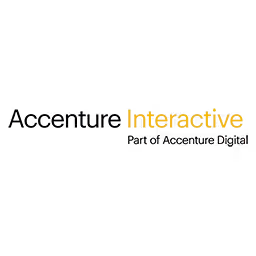Jeremy Keith

Jeremy Keith lives in Brighton, England where he makes websites with the splendid design agency Clearleft. You may know him from such books as DOM Scripting, Bulletproof Ajax, HTML5 For Web Designers, and most recently Resilient Web Design.
He curated the dConstruct conference for a number of years as well as Brighton SF, and he organised the world's first Science Hack Day. He also made the website Huffduffer to allow people to make podcasts of found sounds—it's like Instapaper for audio files.
Hailing from Erin's green shores, Jeremy maintains his link to Irish traditional music running the community site The Session. He also indulges a darker side of his bouzouki-playing in the band Salter Cane.
Jeremy spends most of his time goofing off on the internet, documenting his time-wasting on adactio.com, where he has been writing for over fifteen years.
Talk: Evaluating Technology
We work with technology every day. And every day it seems like there's more and more technology to understand: graphic design tools, build tools, frameworks and libraries, not to mention new HTML, CSS and JavaScript features landing in browsers. How should we best choose which technologies to invest our time in? When we decide to weigh up the technology choices that confront us, what are the best criteria for doing that? This talk will help you evaluate tools and technologies in a way that best benefits the people who use the websites that we are designing and developing. Let's take a look at some of the hottest new web technologies and together we will dig beneath the hype to find out whether they will really change life on the web for the better.
Transcription
Audience: [Applause]
Jeremy Keith: Thank you, Marc. Yeah. Ich bin es wieder.
Audience: [Laughter]
Jeremy Keith: Yeah, I’m very sorry that I’m not Ellen, and Ellen is very sorry that she couldn’t be here. But I’m sure she will be back, and we all wish her all the best.
If Ellen were here, I’m sure she would show you wonderful content strategy ideas, and I can’t possibly fill those shoes. Instead, what I’m going to show you is I’m going to show you some code. Who wants to see some code?
Audience: [Applause]
Jeremy Keith: Well, eh.
Audience: [Laughter]
Jeremy Keith: All right, I’ll show you some code. This is code. This is a picture of code. The code base in this case is the deoxyribonucleic acid. This is literally a photograph of code. It’s the famous Photograph 51, which was taken by Rosalind Franklin, the x-ray crystallographer. And it was thanks to her work that we were able to decode the very structure of DNA.
Base-4, unlike the binary base that we work with, with computers, it’s base-4 A-C-G-T, right: Adenine, Cytosine, Guanine, Thymine. From those four simple ingredients we get DNA, and from DNA we get every single life form on our planet: mammals, birds, fish, plants. Everything is made of DNA. This huge variety from such simple building blocks.
What’s interesting, though, if you look at this massive variety of life on our planet, you’d start to see some trends over time as life evolves through the process of natural selection. You see a trend towards specialization, a species becoming really, really good at something as the environment selects for fitness. A trend towards ubiquity as life attempts to spread as far as possible. And, interestingly, a trend towards cooperation, that a group could be more powerful than an individual.
Now we’re no different to any other life form, and this is how we have evolved over time from simpler beginnings. I mean we like to think of ourselves as being a more highly evolved species than other species, but the truth is that every species of life on this planet is the most highly evolved species of life on this planet because they’re still here, right? Every species is fit for its environment. Otherwise they wouldn’t be here.
This is the process, this long, slow process of natural selection. It’s messy. It takes a long time. It relies on errors in the code to get selected for. This is the process that we human beings have gone through, same as every other species on the planet.
But then we figured out a way to hack the process. We figured out a way to get a jumpstart on evolution, and that’s through technology. Through technology we can bypass the process of natural selection and augment ourselves, extend our capabilities like this. This is a very early example of technology. It existed for millions of years in this form, ubiquitous, across the planet.
This is the Acheulean hand ax. We didn’t need to evolve a sharp cutting tool at the end of our limb because, through technology, we were able to create a sharp cutting tool at the end of our limb. Then through that we were able to extend our capabilities and shape our environment. We shape our tools and, thereafter, the tools shape us.
And we have other tools. This is a modern tool, the pencil. I’m sure you’ll all familiar with it, right? You use it all the time. I think it’s a great piece of technology, great affordance on there. Built in progress bar, and it’s got an undo at the end.
Audience: [Laughter]
Jeremy Keith: What’s interesting is if you look at the evolution of technology and you compare it to the evolution of biology, you start to see some of the same trends, trends towards specialization, ubiquity, and cooperation. The pencil does one thing really, really well. The Acheulean hand ax does one thing really, really well.
All over the world you found Acheulean hand axes, and all over the world you will find the pencil in pretty much the same form. And, most importantly of all, cooperation. No human being can make a pencil. Not by themselves. It requires cooperation.
There’s a famous book by Leonard Read called I, Pencil, and it’s told from the point of view of a pencil and describing how it requires cooperation. It requires human beings to come together to fell the trees to get the wood, to get the graphite, to put it all together. No single human being can do that by themselves. We have to cooperate to create technology.
You can try to create technology by yourself, but you’re probably going to have a hard time. Like Thomas Thwaites, he’s an artist in the U.K. You might have seen his most latest, his most recent project. It was he tried to live as a goat for a year.
This is from a while back where he attempted to make a toaster from scratch. When I say from scratch, I mean from scratch. He wanted to mine his own metals. He wanted to smelt the steel. He wanted to create the plastic, wire it all up, and do it all by himself. It was a very interesting process. It didn’t really work out. I mean it worked for like a second or two when he plugged it in and then completely burned out, and it was prohibitively expensive.
When it comes to technology, cooperation is built in, along with those other trends: specialization, ubiquity, right? It’s easy to think when we compare these trends in biology and technology and we see the overlap. It will be easy to fall into the trap of thinking they’re basically the same process, but they’re not. Underneath the hood the process is very different.
In biology it’s natural selection, right, this long, messy, slow process. But kind of like DNA, it’s very simple building blocks that results in amazing complexity. With technology it’s kind of the other way around. You know nature doesn’t imagine the end result of a species and then work towards that end result, right? Nature doesn’t imagine an elephant or an ostrich. It’s just, that’s the end result of evolution. Whereas with technology, we can imagine things, design things, and then build them. Picture something in our mind that we want to exist in the world and then work together to build that.
Now one of my favorite examples of imagining technology and then creating it is a design school called Chindogu created by Kenji Kawakami. He started the International Chindogu Society in 1995. There’s goals, principles behind Chindogu, and the main one is that these things, these pieces of technology must be not exactly useful, but somehow not all together useless.
I’ll show you what I mean and you get the idea. You look at these things and you think, uh, that’s crazy. But actually, is it crazy or is it brilliant? Like this, I think, well, that’s ridiculous. Well--
Audience: [Laughter]
Jeremy Keith: Actually, right, not entirely useless, not exactly useful, but, you know, keeping your shoes dry in the rain.
Audience: [Laughter]
Jeremy Keith: That seems sort of useful. They’re described as being un-useless. These are un-useless objects. But why not? I mean why not harvest the kinetic energy--
Audience: [Laughter]
Jeremy Keith: --of your child to clean the floors? If you don’t have a child, that’s fine. It works other ways.
Audience: [Laughter]
Jeremy Keith: These things, I mean they’re fun to imagine and to create, but you couldn’t imagine them actually in the world being used. You couldn’t imagine mass adoption.
Like I found this thing from the book of Chindogu from 1995, and it describes this device where you kind of put a camera on the end of a stick so you can take self portraits, but you couldn’t really imagine anyone actually using something like this out in the world, right?
Audience: [Laughter]
Jeremy Keith: But these are all examples of what we see in the history of technology. From Acheulean hand axes to pencils to Chindogu, there are bits of hardware, right? When we think of technology, that’s what we tend to think of: bits of hardware. And the hardware is augmenting the human. The human is using the hardware to gain benefit.
Something interesting happened in the 20th Century when we started to get another layer in between the human and the hardware, and that’s software. Then the human can interact with the software, and the software can interact with the hardware. I would say the best example of this, looking back through the history of technology of the last 100 years or so, would be the Apollo Program, the perfect mixture of human, software, and hardware.
By the way, seeing as we were just talking about selfies and selfie sticks, I just want to point out that this picture is one of the very few examples of an everyone-elsie. This picture was taken by Michael Collins in the Command Module, and Neil Armstrong and Buzz Aldrin are in that spaceship, and every human being alive on planet earth is also in this picture with one exception, Michael Collins, the person taking the picture. It’s an everyone-elsie.
Audience: [Laughter]
Jeremy Keith: I think the Apollo program is the pinnacle of human achievement so far, I would say, and this perfect example of this mixture of, like, amazing humans required to do this, amazing hardware to get them there, and amazing software. It’s hard to imagine how it would have been possible to send people to the moon without the work of Margaret Hamilton, right? Writing the onboard flight software and also creating entire schools of thought of software engineering.
Since then, and looking through the trend of technology from then onwards, what you start to notice is that the hardware becomes less and less important, and the software is what really starts to count with Moore’s law and everything like that, that we can put more and more complexity into the software. Maybe the end goal of technology is eventually that the hardware becomes completely irrelevant, fades away. This idea of design dissolving in behavior. This idea of the hardware becoming irrelevant in a way was kind of what was at the heart of the World Wide Web project created by Tim Berners-Lee when he was at CERN because there at CERN -- CERN is an amazing place, but everybody just kind of does whatever they want. It’s crazy. There’s almost no hierarchy, which means everybody uses whatever kind of computer they want. You can’t dictate to people at CERN you all must use this operating system, right? That was at the heart of the World Wide Web project, the idea to make the hardware irrelevant. It shouldn’t matter what kind of computer you’ve got. You should still be able to access information.
We kind of take that for granted today, but it is quite a revolutionary thought. We don’t worry about it today. You make a website, of course you can look at it on a Windows device or a Mac or a Linux machine or an iPhone, an iOS device, or an Android device. Of course. But it wasn’t clear at the time. You know back at the time you would make software for specific operating systems, so this idea of making hardware irrelevant was kind of revolutionary.
The World Wide Web project is a classic example of a piece of technology that didn’t come out of nowhere. It built on what came before. Like every other piece of technology, it built on what was already there, right? You can’t have Twitter or Facebook without the World Wide Web, and you can’t have the World Wide Web without the Internet. You can’t have the Internet without computers. You can’t have computers without electricity. You can’t have electricity without the Industrial Revolution. All right, so building on the shoulders of giants all the way up.
There’s also this idea of the adjacent possible. It’s like when these things become possible. You couldn’t have had the World Wide Web right after the Industrial Revolution because these other steps hadn’t yet taken place. It’s something that the author Steven Johnson takes about the adjacent possible. It was impossible to invent the microwave oven in 16th Century Holland because there were too many other things that needed to be invented in the way.
It’s easy to see this as, like, an inevitable process that of course electricity follows industrialization. Of course computers come, and of course the Internet comes. And there is a certain amount of inevitability. This happens all the time in the history of technology where there’s simultaneous inventions and, you know, people are beating one another to the patent office by hours to patent, you know, whether it’s radio or the telephone or any of these devices that it seemed inevitable.
I don’t think the specifics are inevitable, right? Something like the World Wide Web was inevitable, but the World Wide Web we got was not. Something like the Internet was inevitable, but not the Internet that we got.
The World Wide Web project itself has these building blocks, right: HTTP, the protocol, URLs as identifiers, and HTML was a simple format. Again, these formats are built upon what came before because it turns out that making the technology, creating a format or a protocol or spec for identifying things, not to belittle the work, but that’s actually not the hard part. The hard part is convincing people to use the protocol, convincing people to use the format.
That’s where you butt up against humans. How do you convince humans, which always reminds me of Grace Hopper, an amazing computer scientist, rear admiral Grace Hopper, coinventor of COBOL and the inventor of the compiler, without which we wouldn’t have computing as we know it today? She bumped up against this all the time that people were reluctant to try new things, right? She had this phrase. She said, “Humans are allergic to change.” Now she used to try and fight that. In fact, she used to have a clock on her wall that went backwards to simply demonstrate that, you know, it’s an arbitrary convention. You could change the convention.
She said the most dangerous phrase in the English language is, “We’ve always done it that way.” So she was right to notice that humans are allergic to change. I think we could all agree on that.
But her tactic was, “I tried to change that,” whereas with Tim Berners-Lee at the World Wide Web, he sort of embraced it. He sort of went with it. He said, “Okay. I’ve got these things I want to convince people to use, but humans are allergic to change,” and that’s why he built on top of what was already there.
He didn’t create these things from scratch. HTTP, the protocol, is built on top of TCP/IP, the work of Bob Kahn and Vint Cerf. The URLs work on top of the domain name system and the work of Jon Postel. And HTML, this very simple format, was built on top of a format, a flavor of SGML that everybody at CERN was already using, right? So it wasn’t a hard sell to get people to use HTML because it was very familiar.
In fact, if you were to look at SGML back then in use at CERN, you would see these elements. These are SGML elements used in CERN SGML. You could literally take a CERN SGML document, change the file extension to .htm, and it was an HTML document.
It’s true. Humans are allergic to change, so go with that. Don’t make it hard for them.
Now of course, we got these elements in HTML. This is where they came from. It’s like just taking wholesale from SGML. Over time, we got a whole bunch more elements, right? We got more semantic richness added to HTML, so we can structure our documents more clearly. Where it gets really interesting is that we also got more behavioral elements added to HTML, the elements that browsers recognize and do quite advanced things with like video and audio on Canvas.
Now what’s interesting is that I find it fascinating, one, that we can evolve a format like this. We can just keep adding things to the format. The reason why we could do that is because these elements were designed with backwards compatibility built in. If you have an open video tag, closing video tag, you can put content in between there for the browsers that don’t understand the video tag.
The same with Canvas. You can put fallback content in there, so you don’t have to wait for every browser to support one of these elements. You can start using it straight away and still provide something for older browsers. That’s very deliberate.
The Canvas element was actually a proprietary element created by Apple and other browsers saw it and said, “Oh, yeah, we like that. We’re going to take that,” and they started standardizing on it. To begin with, it was a standalone element like image. You put a closing slash there or whatever. But when it got standardized, they deliberately added a closing tag so that people could put fallback content in there. What I’m saying is it wasn’t an accident. It was designed.
Now Chris yesterday mentioned the HTML design principles, and this is one of them that when you’re creating new elements, new attributes, you should design them in such a way that the content can degrade gracefully in older or less capable user agents even when making use of these new elements, attributes, APIs, content models. It is a design decision. There are HTML design principles. They’re very good.
I like design principles. I like design principles a lot. I actually collect them. I’m a bit of a nerd for design principles, and I collect them at this URL: principles.adactio.com. There you will find design principles for software, for organizations, for people, for schools of thought. There’s Chindogu design principles I’ve collected there.
I guess why I’m fascinated by principles is where they sit. Jina talked about this yesterday in relation to a design system is that you begin with the goals. This is like the vision, what you’re trying to achieve, and then the principles define how you’re going to achieve that. Then the patterns are the result of the principles. The principles are based on the goals, which result in the patterns.
In the case of the World Wide Web, the goal is to make hardware irrelevant, right? Access to information regardless of hardware. The principles are encoded in the HTML design principles, and then the patterns are those elements that we get, those elements that are designed with backwards compatibility in mind.
Now when we look at new things added to HMTL, new features, new browser APIs, what we tend to ask, of course, is, how well does it work? How well does this thing do what it claims it’s going to do? That’s an excellent question to ask whenever you’re evaluating a new technology or tool. But I don’t think it’s the most important question. I think it’s just as important to ask, how well does it fail?
If you look at those HTML elements, which have been designed that way, they fail well. They fail well in older browsers. You can have that fallback content. I think this is a good lens to look at technology through because what we tend to do, you know, when there’s a new browser API, we go to Can I use, and we see, well, what’s the support like? We see some green, and we see some red. But the red doesn’t tell you how well it fails.
Here’s an example: CSS shapes. If you go to caniuse.com and you look at the support, there’s some green, and there’s some red. You might think there’s not enough green, so I’m not going to use it. But what you should really be asking is, how well does it fail?
In the case of CSS shapes, here’s an example of CSS shapes in action. I’ve got a border radius on this image, and on this text here I’ve said, you know, shape outside circle on the image, so the text is wrapping around that circle. How well does it fail? Well, let’s look at it in a browser that doesn’t support CSS shapes, and we see the text goes in a straight line.
I’d say it fails pretty well because this is what would have happened anyway, and the text wrapping around the circle was kind of an enhancement on top of what would have happened anyway. Actually, it fails really well, so you might as well go ahead and use it. You might as well go ahead and use it even if it was only supported in one browser or two browsers because it fails well.
Let’s use that lens of asking how well does it work and how well does it fail to look at some of the technologies that you’ve probably been hearing about some of the buzzwords in the worlds of front-end development. Let’s start with this. This is a big buzzword these days: service workers.
Who has heard of service workers? Okay. Quite a few.
Who is using service workers? Not so many. Interesting.
The rest of you, you’ve heard of it, and you’re currently probably in the state of evaluating the technology, trying to decide whether you should use this technology.
I’m not going to explain how service workers work. I guess I’ll just describe what it can do. It’s an amazing piece of technology that you kind of install on the user’s machine and then it sits there like a virus intercepting requests, which sounds scary, but actually is really powerful because you can really improve performance. You can serve things from a cache. You get access to the cache API. You can make things work offline, which is kind of amazing, because you’ve got access to those requests.
I mean I was trying to describe it the other day and the best way I could think of describing it was a service worker is like doing a man in the middle attack on your own website, but in a good way - in a good way. There’s endless possibilities of what you can do with this technology. It’s very powerful. And, at the very least, you can make a nice, custom, offline page instead of the dinosaur game or whatever people would normally get when they’re offline. You can have a custom offline page in the same way you could have a custom 404 page.
The Guardian have a service worker on their site, and they do a crossword puzzle. You’re on the train, you’re trying to read that article, but there’s no Internet connection. Well, you can play the crossword puzzle, right? Little things like that, so it can be used for real delight. It’s a great technology.
How well does it work? It does what it says…. You don’t get anything for free with service workers, though. A service worker file is JavaScript, which can actually be quite confusing because you’ll be tempted to treat it like your other JavaScript files and do what you would do to other JavaScript files, but don’t do that. It’s almost like service worker script happened to be written in JavaScript, but they require this whole new mindset, so it’s kind of hard to get your head around. It’s a new technology to learn, but it’s powerful.
Well, let’s see what the support is like on Can I use. Not bad. Not bad at all. Some good green there, but there’s quite a bit of red. If this is the reason why you haven’t used service workers yet because you see the support and you think, “Not enough support. I’m not going to invest my time,” I think you haven’t asked the question, how well does it fail? This is where I think the absolute genius of service worker comes in.
Service workers fail superbly because here’s what happens with a service worker. The first time someone visits your site there, of course, is no service worker installed on the client. They must first visit your site, get the downloads, have that service worker installed, which means every browser doesn’t support service workers for the first visit.
Then, on subsequent visits, you can use the service worker for the browsers that support it as this enhancement. Provide the custom offline page. Cache those assets. Do offline first stuff. But you’re not going to harm any of those browsers that are in the red on Can I use, and that’s deliberate in the design of service workers. It’s been designed that way. I think service workers fail really well.
Let’s look at another hot topic. Web components, who has heard of Web components? Who is using Web components - the real thing now? Okay. Wow. Brave. Brave person.
Web components actually aren’t a specific technology. Web components is an umbrella term. I mean in a way service workers is kind of an umbrella term because it’s what you get access to through service workers that counts. You get access to the fetch API and the cache API and even notifications through a service worker.
With Web components it’s this term for a combination of specs, a combination of APIs like custom elements, the very sinister sounding shadow DOM, which is not as scary as it sounds, and there’s other things in there too like HTML imports and template. All of this stuff together is given the label Web components. The idea is we’ve already got these very powerful elements in HTML, and it’s great when they get added to HTML, but it takes a long time. The standards process is slow. What if we could just make our own elements? That’s what you get to do with custom elements. You get to make shit up, right?
These common patterns you keep having to reinvent the wheel. Let’s make an element for that. The only requirement with a custom element is that you have to have a hyphen in there. This is kind of a long-term agreement with the spec makers that they will never make an HTML element with a hyphen in it. Therefore, it’s kind of a safe space to use a hyphen in a made up element.
Okay, but if you just make up an element like this, it’s effectively the same as having a span in your document. It doesn’t do anything. It’s the other specs that make it come to life like having HTML imports that you link off to a file that describes what the browser is supposed to do with this new
Then in that file you could have your HTML. You could have your CSS. You could have JavaScript. And, crucially, it is modular. It doesn’t leak through. Those styles won’t leak through to the rest of the page. This is the dream we’ve been chasing: encapsulation. This is kind of the problem that REACT is solving. This is the reason why we have design systems is to try and be modular and try and encapsulate styles, behaviors, semantics, meaning.
Web components are intended as a solution to this, so it sounds pretty great. How well does it work? Well, let’s see what the browser support is like for some parts of Web components. Let’s take custom elements. Yeah, some green, but there’s an awful lot of red. Never mind, as we’ve learned from looking at things like CSS shapes and service workers. But the red doesn’t tell us anything because the lack of support in a browser doesn’t answer the question, how well does it fail? How well do Web components fail?
This is where it gets interesting because the answer to the question, “How well do Web components fail?” is, it depends.
Audience: [Laughter]
Jeremy Keith: It depends on how you use the Web components. It depends if you applied the same kind of design principles that the creators of HTML applied when they’re making new elements.
Let’s say you make an image gallery element, and you make it so that the content of the image gallery is inside the open and closing tag. Now in a nonsupporting browser this is actually acceptable because they won’t understand what this image gallery thing is. They won’t throw an error because HTML is very tolerant of stuff it doesn’t understand, right? They’ll just display the images as images. That’s acceptable.
Now in a browser that supports Web components, all those different specs, you can take these images, and you can whiz-bang them up into a swishy carousel with all sorts of cool stuff going on that’s encapsulated that you can share with other people that people can just drop into their site. If you do this, Web components fail very well. However, what I tend to see when I see Web components in use is more like this where it’s literally an opening tag, closing tag, and all of the content and all the behavior and all the styling is away somewhere else being pulled in through JavaScript, creating a kind of single source of failure.
In fact, there’s demo sites to demonstrate the power of Web components that do this. The Polymer Project, there’s a whole collection of Web components, and they created an entire online shop to demonstrate how cool Web components are, and this is the HTML of that shop. The body element simply contains a shop app custom element and then script, and all the power is in the script. Here the Web component fails really badly because you get absolutely nothing. That’s what I mean when I say it depends. It depends entirely on how we use them.
Now the good news is, as we saw from looking at Can I use, it’s very early days with Web components. We haven’t figured out yet what the best practices are, so we can set the course of the future here. We can decide that there should be design principles for how we collectively use this powerful technology like Web components.
See, the exciting thing about Web components is that they give us developers the same power that previously only browser makers had. But the scary thing about Web components is that they give us developers the same power that previously only browser makers had. With great power, et cetera, et cetera, and we should rise to the challenge of that responsibility.
What’s interesting about both these things we’re looking at is that, like I said, they’re not really a single technology in themselves. They’re kind of these umbrella terms, right? With service worker it’s an umbrella term for fetch and cache and notifications, background sync - very cool stuff. With Web components it’s an umbrella term for custom elements and HTML imports and shadow DOM and all this stuff.
But they’re both coming from the same place, the same sort of point of view, which is this idea that we, Web developers, should be given that power and that responsibility to have access to these low level APIs rather than just waiting for standards bodies to give us access through new APIs. This is all encapsulated in a school of thought called The Extensible Web, that we should have access to these low level APIs.
The Extensible Web is effectively -- it’s literally a manifesto. There’s a manifesto for The Extensible Web. It’s just a phrase, right? It’s not a technology, just words, but words are very powerful when it comes to technology, when it comes to adopting technology. Words can get you very far. Ajax is just a word. It’s just a word for technologies that already existed at the time, but Jesse James Garrett put a word on it, and it made it easier to talk about it, and it helped the adoption of those technologies.
Responsive Web design: what Ethan did was he put a phrase to a collection of technologies: media queries, fluid layouts, fluid images. Wrapped it all up in a very powerful term, responsive Web design, and the Web was never the same.
Here’s a term you’ve probably heard of over the last couple of days: progressive Web apps. Anybody who went to the Microsoft talk yesterday at lunchtime would have heard about progressive Web apps. It’s just a term. It’s just an umbrella term for other technologies underneath. Progressive Web app is the combination of having your site run over HTTPS, so it’s secure, which by the way is a requirement for running a service worker, and then also having a manifest file, which contains all this metadata. Chris mentioned it yesterday, right? You point to your icons and metadata about your site. All that adds up to, hey, you’ve got a progressive Web app.
It’s a good sounding -- I like this term. It’s a good sounding term. It was created by Frances Berriman and her husband, Alex Russell, to describe this. Again, a little bit of a manifesto in that these sites should be responsive and intuitive and they need to fulfill these criteria. But I worry sometimes about the phrasing. I mean all the technologies are great, right?
And you will actually get rewarded if you use these technologies. If you use HTTPS, you got a service worker, you got a manifest file. On Chrome for Android, if someone visits your site a couple of times, they’ll be prompted to add the site to the home screen just as though it were a native app. It will behave like a native app in the app switcher, right? You’re getting rewarded for these best practices.
But when I see the poster children for progressive Web apps, my heart sinks when I see stuff like this. This is the Washington Post progressive Web app, but this is what you get if you visit on the “wrong” device. In this case I’m visiting on a desktop browser, and I’m being told to come back with a mobile browser. Oh, how the tables have turned. It was not that long ago when we were being turned away on our mobile devices, and now we’re turning people away on desktops.
This was a solved problem. We did this with responsive Web design. The idea of having a separate site for your progressive Web app - no, no, no. We’re going back to the days of m.sites and the “real” website. No. No. I feel this is the wrong direction.
I worry that maybe this progressive Web app terminology might be hurting it and the way that Google are pushing this app shell model. Anything can be a progressive Web app, anything on the Web.
I mean I’ve got things that I’ve turned into progressive Web apps, and some of them might be, okay, maybe you consider this site, Huffduffer, as an app. I don’t know what a Web app is, but people tell me it might be a Web app. But I’ve also got like a community website, and it fulfills all the criteria. I guess it’s a progressive Web app, right? My personal site, it’s a blog, but technically it’s a progressive Web app. I put a book online. A book is an app now because it fulfills all the criteria. Even a single page collecting design principles is technically a progressive Web app.
I worry about the phrasing, potentially limiting people when they come to evaluate the technology. Oh, progressive Web app, well, that’s not for me because I’m not building apps. I’m building some other kind of site. I think that would be a real shame because literally every site on the Web can benefit from those technologies, which brings me to the next question when we’re evaluating technology. Who benefits from the technology?
Broadly speaking, I would say there’s kind of two schools of who could benefit from a particular technology on the Web. Does the technology benefit the developer or does the technology benefit the user? Much like what Chris was showing yesterday with the Tetris blocks and kind of going on a scale from technologies that benefit users, technologies that benefit developers.
Now I would say that nine times out of ten there is no conflict. Nine times out of ten a piece of technology is beneficial to the developer and beneficial to the user, right? You could argue that any technology that benefits the developer is de facto a benefit to the user because the developer is working better, working faster, therefore they can get the website out, and that’s good for the user.
Let’s talk about technologies that directly impact users versus the technologies that directly impact developers. Now personally I’m going to generally fall down on the side of technologies that benefit users over technologies that benefit developers. I mean you look at something like service workers. There isn’t actually a benefit to developers. If anything, there’s a tax because you’ve got to get your head around service workers. You’ve got a new thing to learn. You’ve got to get your head down, learn how it works, write the code. It’s actually not beneficial for developers, but the end result--offline pages, faster performance--hugely beneficial for users. I’ll fall down on that side.
Going back to, you know, I told you I was a nerd for design principles. Well, I actually have a favorite design principle and it’s from the HTML design principles. It’s the one that Chris mentioned yesterday morning. It’s known as the priority of constituencies: In case of conflict, consider users over authors over specifiers over theoretical purity. That’s pretty much the way I evaluate technology too. I think of the users first. And the authors, that’s us, we have quite a strong voice in that list, but it is second to users.
Now when we’re considering the tools and we’re evaluating who benefits from this tool, “Is it developers, or is it users, or is it both?” I think we need to stop and make a distinction about the kinds of tools we work with. I’m trying to work out how to phrase this distinction, and I kind of think of it as inward facing tools and outward facing tools: inward facing tools developers use, outward facing tools that directly touch end users.
I’ll show you what I mean. These are like the inward facing tools in that you put them on your computer. They sit on your computer, but the end output is still going to be HTML, CSS, and JavaScript. These are tools to make you work faster: task runners, version control, build tools - all that kind of stuff.
Now when it comes to evaluating these technologies, my attitude is, whatever works for you. Now we can have arguments and say, oh, I prefer this tool over that tool, but it really doesn’t matter. What matters is, does it work for you? Does it make you work faster? Does it make your team work faster? That’s really the only criteria because none of these directly touch the end user.
That criteria of, hey, what works for me, that’s a good one to apply for these inward facing tools, but I think we need to apply different criteria for the outward facing tools, the tools that directly affect the end user because, yes, we, developers, get benefit from these frameworks and libraries that are written in CSS and JavaScript, but the user pays a tax. The user pays a tax in the download of these things when they’re on the client. It’s actually interesting to see how a lot of these JavaScript frameworks have kind of shifted the pendulum where it used to be the user had to pay a tax if you wanted to use React of Angular or Ember. The pendulum is swinging back that we can get the best of both worlds where you can use these tools as an inward facing tool, use them on the server, and still get the benefit to the user without the user having to pay this tax.
I think we need to evaluate inward facing tools and outward facing tools with different criteria. Now when it comes to evaluating tools, especially tools that directly affect the end user--CSS frameworks, JavaScript libraries, things like that--there’s a whole bunch of questions to ask to evaluate the technology, questions like: what’s the browser support like? What browsers does this tool not work in? What’s the community like? Am I going to get a response to my questions? How big is the file size? How much of a tax is the user going to have to download? All of these are good questions, but they are not the most important question.
The most important question--I’d say this is true of evaluating any technology--is, what are the assumptions? What are the assumptions that have been baked into the tool you’re about to use, because I guarantee you there are assumptions baked into those tools? I know that because those tools were created by humans. And we humans, we have biases. We have assumptions, and we can’t help but encode those biases and assumptions into what we make. It’s true of anything we make. It’s particularly true of software.
We talk about opinionated software. But in a way, all software is opinionated. You just have to realize where the opinions lie. This is why you can get into this situation where we’re talking about frameworks and libraries, and one person is saying, oh, this library rocks, and the other person is saying, no, this library sucks. Right? They’re both right and they’re both wrong because it entirely depends on how well the philosophy of that tool matches your own philosophy.
If you’re using a tool that’s meant to extend your capabilities and that tool matches your own philosophy, you will work with the tool, and you will work faster and better. But if the philosophy of the tool has a mismatch with your own philosophy, you’re going to fight that tool every step of the way. That’s why people can be right and wrong about these frameworks. What works for one person doesn’t work for another. All software is opinionated.
It makes it really hard to try and create unopinionated software. At Clearleft we’ve got this tool. It’s an open source project now called Fractal for building pattern libraries, working with pattern libraries. The fundamental principle behind it was that it should be as agnostic as possible, completely agnostic to build tools, completely agnostic to templating languages, that it should be able to work just about anywhere. It turns out it’s really, really hard to make agnostic software because you keep having to make decisions that favor one thing over another at every step.
Whether it’s writing the documentation or showing an example, you have to show the example in some templating language, right? You have to choose a winner in the documentation to demonstrate something. It’s really hard to write agnostic software. Every default you add to a piece of software shows your assumptions because those defaults matter.
But I don’t want to make it sound like these tools have a way of working and there’s no changing it, that the assumptions are baked in and there’s nothing you can do about it, that you can’t fight against those assumptions because there are examples of tools being used other than the uses for which they were intended right throughout the history of technology. I mean when Alexander Graham Bell created the telephone, he thought that people would use it to listen to concerts that were happening far away. When Edison created the gramophone, he thought that people would record their voices so they could have conversations at a distance. Those two technologies ended up being used for the exact opposition purposes than what their inventors intended.
Here’s an example from the history of technology from Hedy Lamarr, the star of the silver screen the first half of the 20th Century here in Europe. She ended up married to an Austrian industrialist arms manufacturer. After the Anschluss, she would kind of sit in on those meetings taking notes. Nobody paid much attention to her, but she was paying attention to the technical details.
She managed to get out of Nazi occupied Europe, which was a whole adventure in itself. Made her way to America, and she wanted to do something for the war effort, particularly after an incident where a refuge ship was sunk by a torpedo. A whole bunch of children lost their lives, and she wanted to do something to make it easier to get the U-boats. She worked on a system for torpedoes. It was basically a guidance system for radio controlled torpedoes.
The problem is, if you have a radio frequency you’re using to control the torpedo to guide it towards its target, if the enemy figure out what the frequency is, they can jam the signal and now you can no longer control the torpedo. Together with a composer named George Antheil, Hedy Lamarr came up with this system for constantly switching the frequency, so both the torpedo and the person controlling it are constantly switching the radio frequency to the same place, and now it’s much, much harder to jam that transmission.
Okay. But what’s that got to do with us, some technology for guided missiles in World War II? In this room, I’m guessing you’ve got devices that have wi-fi and Bluetooth and GPS, and all of those technologies depend on frequency hopping. That wasn’t the use for which it was created, but that’s the use we got out of it.
We can kind of bend technology to our will, and yet there seems to be a lot of times this inevitability to technology. I don’t mean on the front-end where it’s like, I guess I have to learn this JavaScript framework because it seems inevitable that everyone must learn this JavaScript framework, right? Does anyone else feel dis-empowered by that, that feeling of, like, uh, I guess I have to learn that technology because it’s inevitable?
I get that out in the real world as well, like, I guess this technology is coming, you know, with self-driving cars, machine learning, whatever it happens to be. I guess we’ve just got to accept it. There’s even this idea of technological determinism that technology is the driving force of human history. We’re just along for the ride, right? It’s the future. Take it.
The ultimate extreme of this attitude of technological determinism is the idea of the technological singularity, kind of like the rapture for the nerds, right? It’s an idea borrowed from cosmology where you have a singularity at the heart of a black hole. You know a star collapses to as dense as possible. It creates a singularity. Nothing can escape, not even light.
The point is there’s an event horizon around a black hole, and it’s impossible from outside the event horizon to get any information from what’s happening beyond the event horizon. With a technological singularity, the idea is that technology will advance so quickly and so rapidly there will be an event horizon, and it’s literally impossible for us to imagine what’s beyond that event horizon. That’s the technological singularity. It makes me uncomfortable.
But looking back over the history of technology and the history of civilization, I think we’ve had singularities already. I think the Agricultural Revolution was a singularity because, if you tried to describe to nomadic human beings before the Agricultural Revolution what life would be like when you settle down and work on farms, it would be impossible to imagine. The Industrial Revolution was kind of a singularity because it was such a huge change from agriculture. And we’re probably living through a third singularity now, an information age singularity.
But the interesting thing is, looking back at those previous singularities, they didn’t wipe away what came before. Those things live alongside. We still have agriculture at the same time as having industry. We still have nomadic peoples, so it’s not like everything gets wiped out by what comes before.
In fact, Kevin Kelly, who is a very interesting character, he writes about technology. In one of his books he wrote that no technology has ever gone extinct, which sounds like actually a pretty crazy claim, but try and disprove it. And he doesn’t mean it is a technology sitting in a museum somewhere. He means that somewhere in the world somebody is still using that piece of technology, some ancient piece of farming equipment, some ancient piece of computer equipment.
He writes these very prevocational sort of books with titles like What Technology Wants, and The Inevitable, which makes it sound like he’s on the side of technological determinism, but actually his point is a bit more subtle. He’s trying to point out that there is an inevitability to what’s coming down the pipe with these technologies, but we shouldn’t confuse that with not being able to control it and not being able to steer the direction of those technologies.
Like I was saying, something like the World Wide Web was inevitable, but the World Wide Web we got was not. I think it’s true of any technology. We can steer it. We can choose how we use the technologies.
Looking at Kevin Kelly and his impressive facial hair, you might be forgiven for thinking that he’s Amish. He isn’t Amish, but he would describe himself as Amish-ish in that he’s lived with the Amish, and he thinks we can learn a lot from the Amish.
It turns out they get a very bad reputation. People think that the Amish reject technology. It’s not true. What they do is they take their time. The Amish are steadily adopting technology at their pace. They are slow geeks. I think we could all be slow geeks. We could all be a bit more Amish-ish. I don’t mean in our dress sense or facial hair.
Audience: [Laughter]
Jeremy Keith: I mean in the way that we are slow geeks and we ask questions of our technology. We ask questions like, “How well does it work?” but also, “How well does it fail?” That we ask, “Who benefits from this technology?” And perhaps most importantly that we ask, “What are the assumptions of those technologies?” because when I look back at the history of human civilization and the history of technology, I don’t see technology as the driving force, that it was inevitable that we got to where we are today. What I see as the driving force are people, remarkable people, it’s true, but people nonetheless.
And you know who else is remarkable? You’re remarkable. And your attitude shouldn’t be, “It’s the future. Take it.” It should be, “It’s the future. Make it.” And I’m looking forward to seeing the future you make. Thank you.
Audience: [Applause]













